NZ: Nelson bush fire 'growing all the time' as wind fans flames
More than 100 homes have been evacuated in the Nelson region as a forest fire burning 30km from the city continues to grow, with firefighters warning it could take four days to extinguish.
Live updates HERE
The essentials:
- Civil defence emergency declared 8am by Nelson, Tasman mayors
- Areas evacuated: At least 170 homes in Eves Valley, Golden Hills Road, Redwood Valley Road, Mallings Road and Greenacres Road
- Areas on notice for potential evacuation: Sunrise Valley, Deep Dale Road in Upper Moutere and Pigeon Valley also on notice for potential evacuation
- If people evacuate and leave their homes it is asked they register with the Civil Defence Centre at St Johns Church, Edwards St in Wakefield or ring Civil Defence 03 5437290 to register they have moved and are safe. This is important to ensure everyone is accounted for and safe
- Homes destroyed in: Eves Valley and Redwood Valley
- Fire response: 12 fire crews worked overnight, 10 helicopters and two planes being used this morning. Firefighters say it could be up to four days before the fire is extinguished.
- Dwindling water supplies, wind and drought are adding to problems faced by firefighters
6 January, 2019
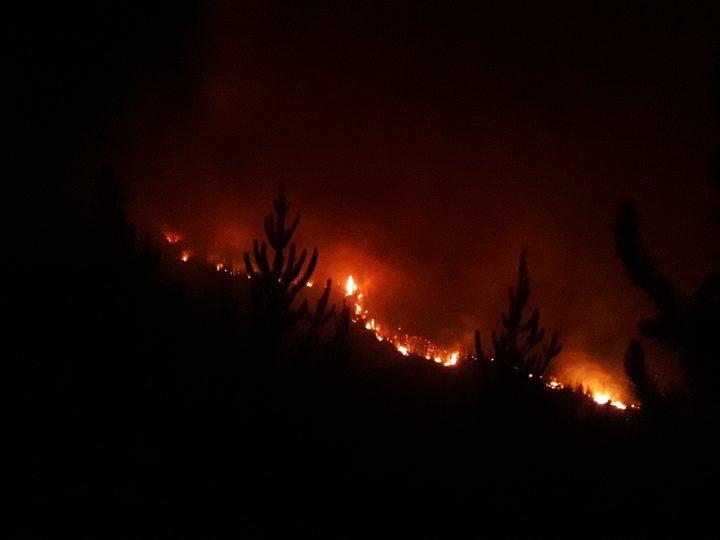
The Nelson fire burning overnight. Photo: Facebook / @NelsonFireBrigade
The fire which started in Pigeon Valley yesterday afternoon grew to 1870ha with a perimeter of 20km by 3am.
Tasman mayor Richard Kempthorne and Nelson mayor Rachel Reese have declared a civil defence emergency.
Fire and Emergency said more than 100 homes in Eves Valley, Golden Hills Road, Redwood Valley Road, Mallings Road and Greenacres Road had been evacuated - forcibly or voluntarily - with people registering with the Civil Defence Centre in Wakefield.
They said Sunrise Valley, Deep Dale Road in Upper Moutere and Pigeon Valley were also on notice for potential evacuation.
There were reports of homes destroyed in Eves Valley and Redwood Valley, with damage also to areas from Pigeon Valley north to the Inland Moutere Highway and Waimea West Road, Fire and Emergency said.
Nelson residents reported ash falling over the city, despite the fire's distance.
Wakefield Fire Station chief officer Fritz Buckendahl said a dozen fire crews worked into the night to protect property.
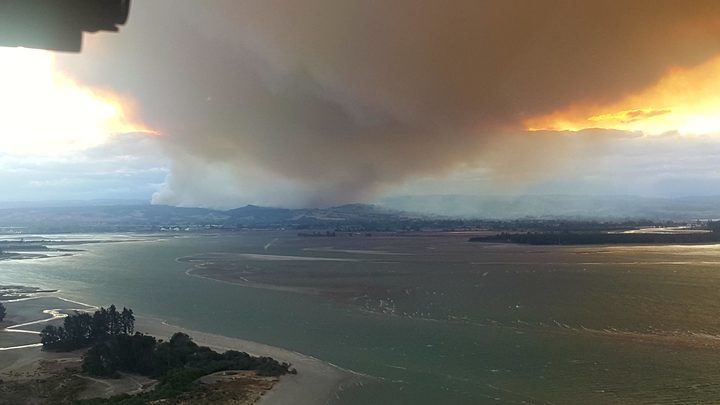
Smoke from the Tasman forest fire, on approach to Nelson from the flight deck of an Air NZ plane. Photo: RNZ / Tracy Neal
Early this morning 10 helicopters and two planes will be called back into the fight.
Mr Buckendahl expects them to again tackle the fire directly within the forestry block.
"Wind is our biggest factor; the heat of the day; terrain - it's rolling country - and also just the nature of the forest.
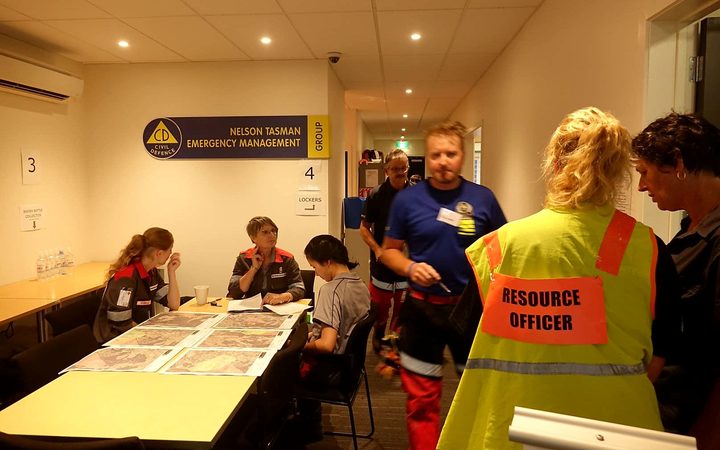
Crew change this morning at Nelson Tasman Civil Defence Emergency Management Centre in Richmond. Photo: RNZ / Tracy Neal
"There's a lot of factors involved and unfortunately it's just going against us at the moment. It's just growing all the time."
The blaze was whipped to a firestorm yesterday by winds gusting to 45km/h during the afternoon and evening.
The area is very dry, with the nearby Tasman region heading towards drought conditions prompting water restrictions.
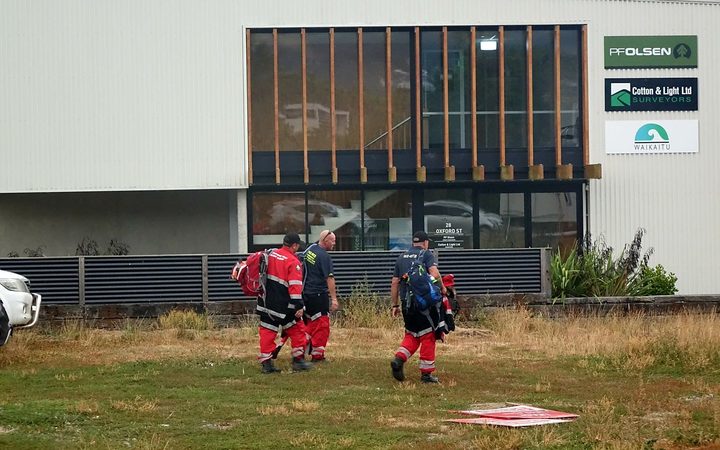
Crew change this morning at Nelson Tasman Civil Defence Emergency Management Centre in Richmond. Photo: RNZ / Tracy Neal
It followed a heatwave last week as temperatures in several areas in the country reached record temperatures.
- If people evacuate and leave their homes it is asked they register with the Civil Defence Centre at St Johns Church, Edwards St in Wakefield or ring Civil Defence 03 5437290 to register they have moved and are safe. This is important to ensure everyone is accounted for and safe.
6 February, 2019
Several houses have been lost in Redwood Valley in the Nelson region in a large forest fire and people who are downwind of the fire must be prepared to evacuate at a moment's notice, Tasman-Marlborough firefighters say.
The fire has now spread to 780 hectares and firefighters say they could be battling the blaze for another two to four days.
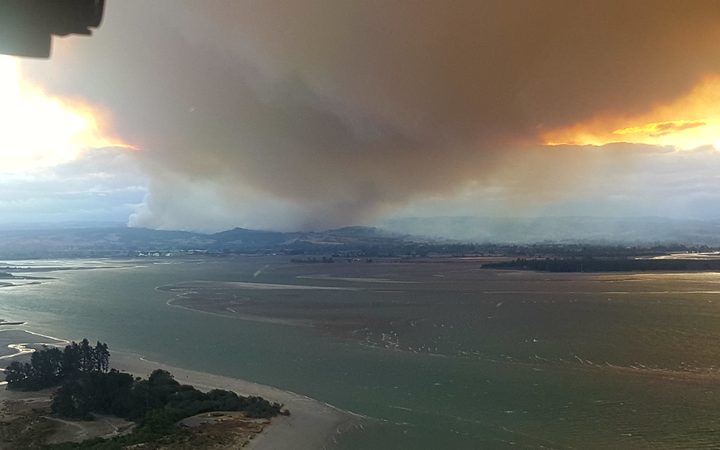
Smoke from the Tasman forest fire, on approach to Nelson from the flight deck of an Air NZ plane. Photo: RNZ / Tracy Neal
The fire broke out mid-afternoon in Pigeon Valley near Nelson - it's now grown to 780 hectares with a perimeter of 14km and conditions are hot and windy.
People living near the fire were this afternoon told to evacuate immediately and 11 families had arrived at the Civil Defence Centre by 11pm.
It's been set up at St Johns in Wakefield and emergency services are expecting the number of people using it to rise.
Due to strong winds fanning the flames, crews have not been able to access the forest areas and are instead focusing on controlling the fire when it's spotted on grassland.
Twelve firefighting crews will be on site overnight and tomorrow, two planes and six helicopters will arrive to help control the blaze.
Residents of Eves Valley near the fire and surrounding areas were this afternoon told to leave their homes.
Teapot Valley residents are being told to get ready to get out, as if the need arises they will not have much time to prepare.
Earlier this evening, more than 60 firefighters and five helicopters with monsoon buckets were still battling the blaze, as it moved north towards Eves Valley and Teapot Valley.
Tasman District Council is warning people against visiting the area, so emergency services can work.
Nelson residents are reporting ash is falling over the city, despite the fire being 30km away.
Alison Hossain, who lives in Atawhai, near central Nelson, can see a huge, dark, red cloud and ash is falling from the sky. She said she could smell the smoke, which is gritty and gets into the eyes.
"The reflection on to the water in Nelson Bay is just red and dark, it's really quite eery," she said.
Tasman District Mayor Richard Kempthorne said about 30 were being evacuated in total, and he was urging people to stay calm.
Emergency services were doing their best in difficult conditions, Mr Kempthorne said.
"It will be hours, if not a day or two, before the fire is completely out. We are so dry at the moment, we're in an extreme fire risk time so it will take a while to get the fire completely out."
Mr Kempthorne said emergency services have set up a centre for welfare, and people could contact the council for more information if they needed.
Firefighters in Tasman District said they could be battling the blaze for another two to four days.
Wakefield Fire Station chief fire officer Fritz Buckendahl said high winds, rolling country and dry radiata pine trees were allowing the fire to spread very quickly.
He said all the factors were working against firefighters at this stage.
Mr Buckendahl said crews would reassess the fire early in the morning and start fighting it from directly within the forestry block again.
Eves Valley resident and deputy Tasman mayor Tim King talked to Checkpoint as he was preparing to leave his house and said the fire had got progressively closer over the course of the afternoon.
He said he had spent the afternoon packing gear up and police told them to leave about 5pm. He said a lot of friends and family have helped them get irreplaceable things from their house.
Mr King said all he could see is black smoke over the property but no flames and it was still a reasonable distance away, but it was important to evacuate.
"The wind's blowing and I've been involved in rural firefighting over the last 20 years and I know these things can change in a rush, so when someone says 'you need to leave', you need to leave."
He said there were only about half a dozen residents in Eves Valley.
Resident Simon Reiter said his property was about 1km away from the blaze and he had been told by police to have a bag packed just in case.
"We've made plans, horse floats are connected onto vehicles and everyone's been allocated what animals they're taking out. We've sort of made those plans to be ready to go as most people in the valley have done."
Mr Reiter said he was worried for friends further up the road who had livestock near the path of the fire.
Teapot Valley resident Abigail Marshall said they rounded up cats, dogs and one hen, and gathered precious possessions after being told to evacuate.
She said the smoke was getting thicker on the valley floor.
"Dad said he saw flames not that long ago from down the valley a bit further. The smoke is definitely getting thicker, we can now see a little bit of smoke at our property, like down at eye level."
Park Manager of Higgins Heritage Park on Pigeons Valley Road, Allan Palmer, said the fire is further up the road, but he is concerned about the wind.
"The south-westerly winds behind it, there's a lot of trees ahead of it, so it doesn't look too good and we are so very very dry, it's the driest we've known it for many years in the Waimeas."
Kayla Lynette Jackson who works at the Wakefield Bakery told Checkpoint there was a lot of smoke coming off the hills.
She said the fire was getting close to her house and there are a lot of nearby farms including two horse farms and a deer farm.
There had not been any rain in the area since December, she said.




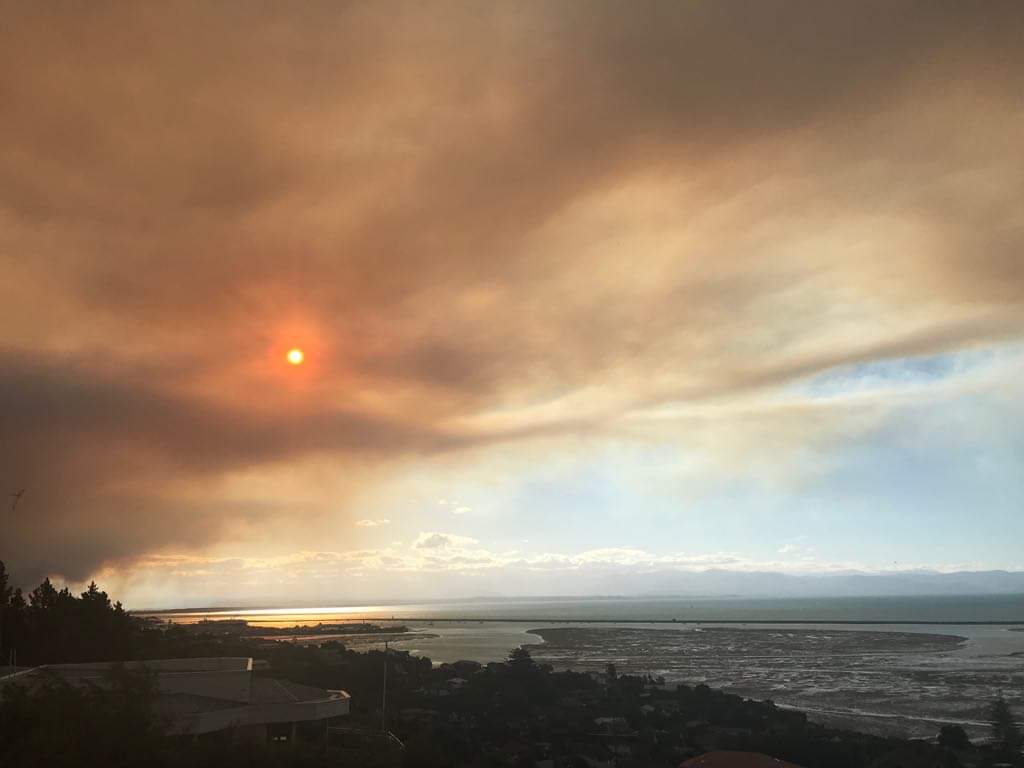



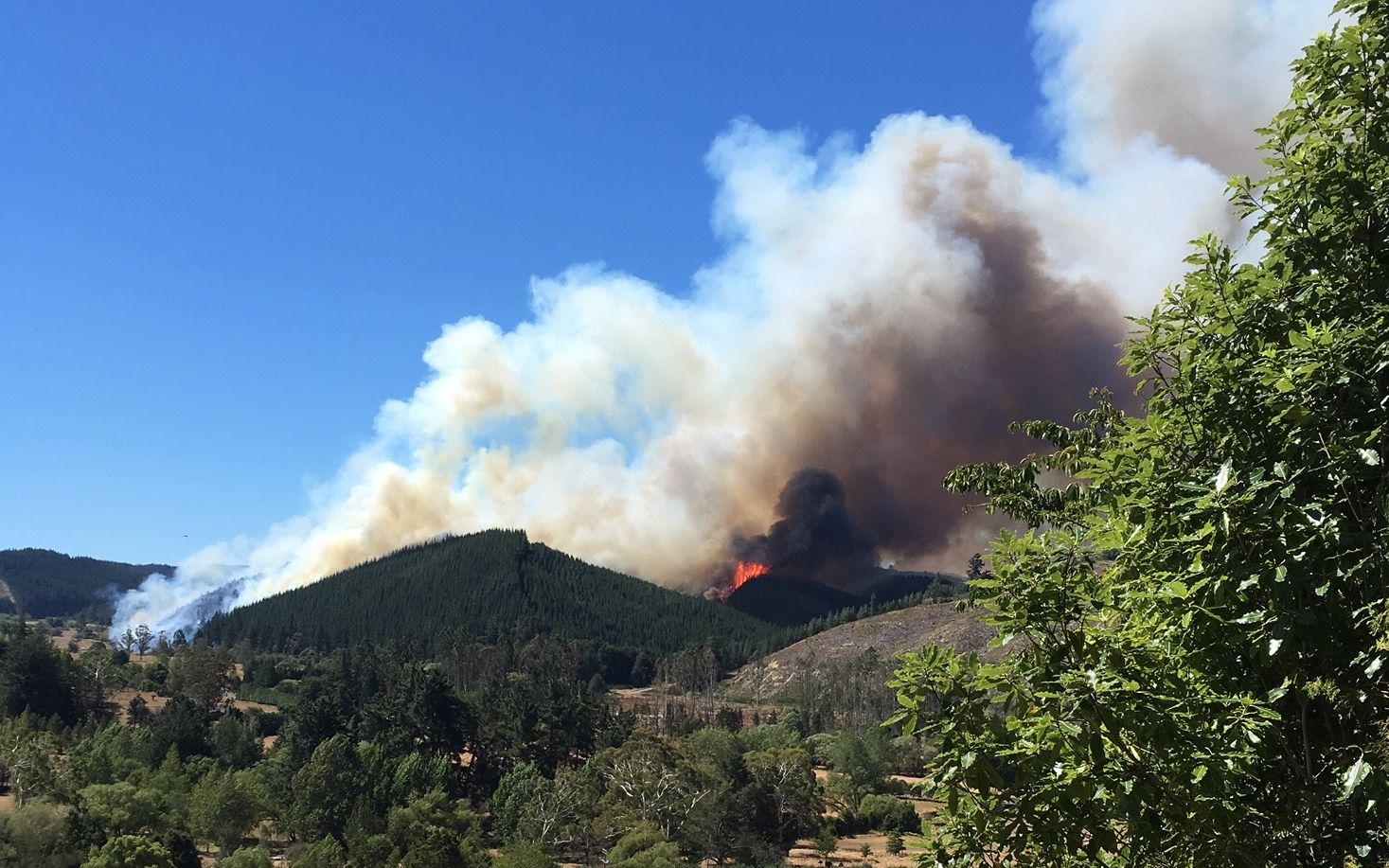


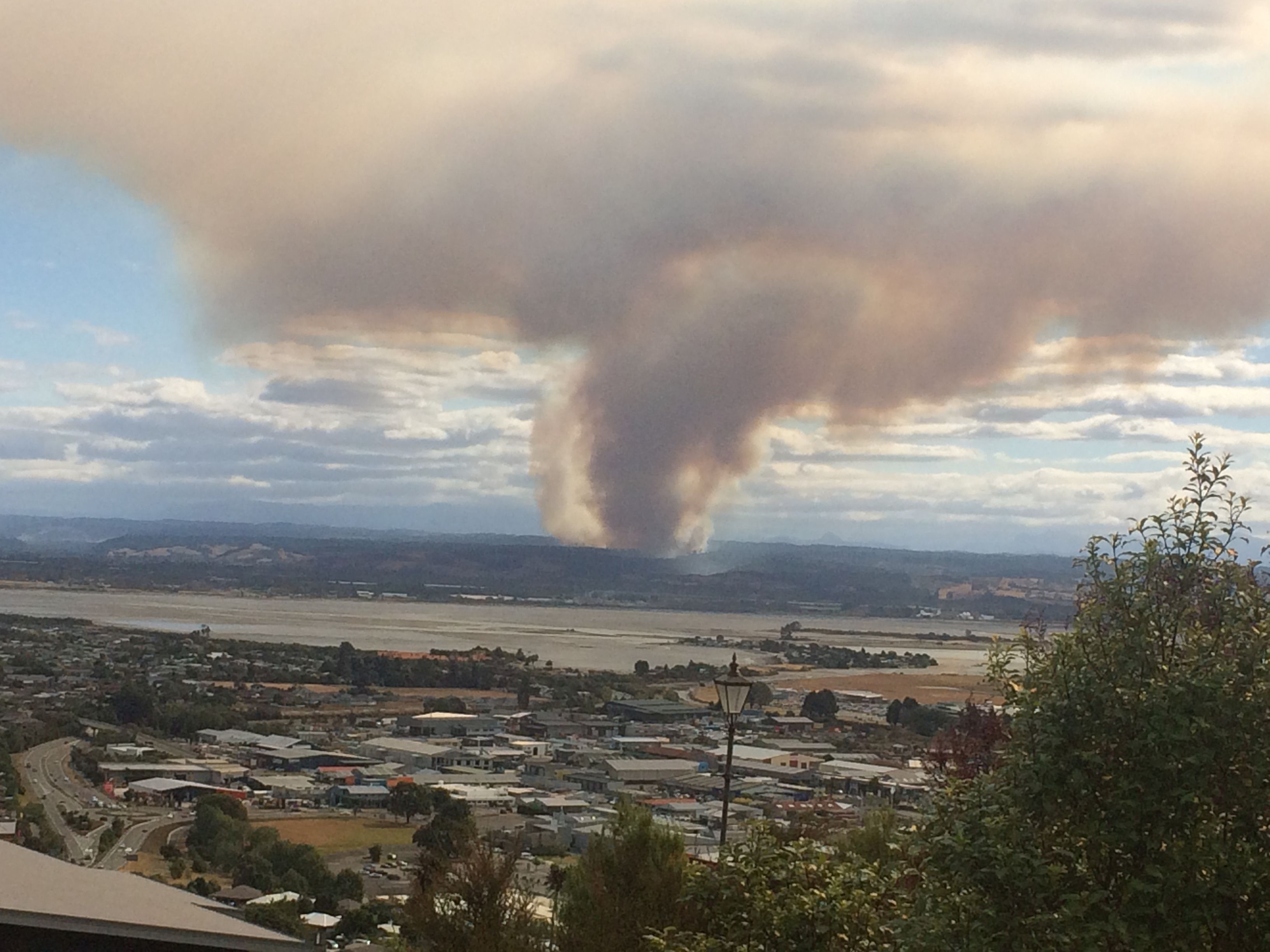









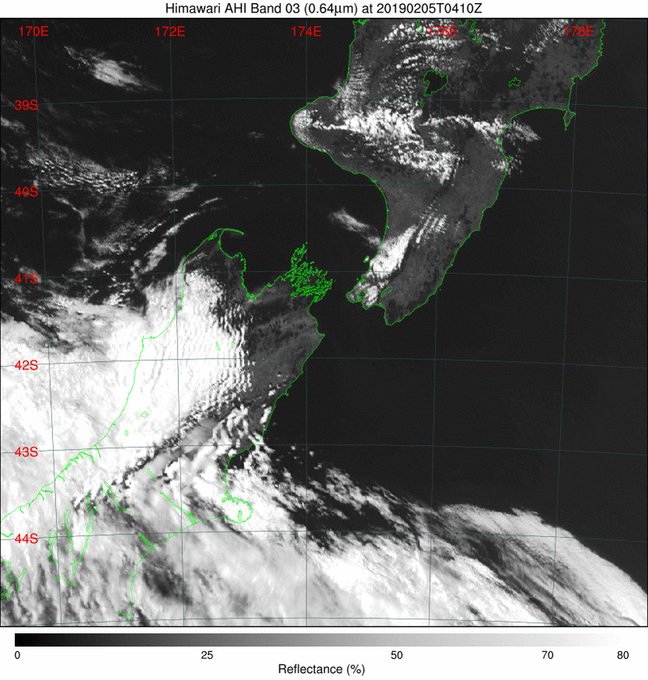



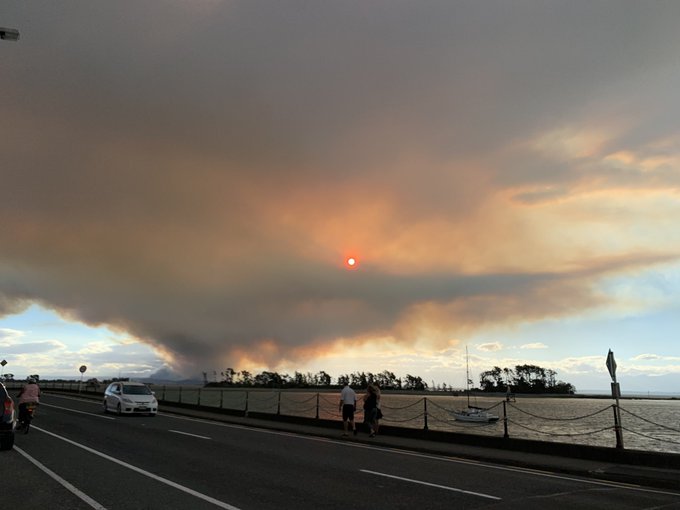
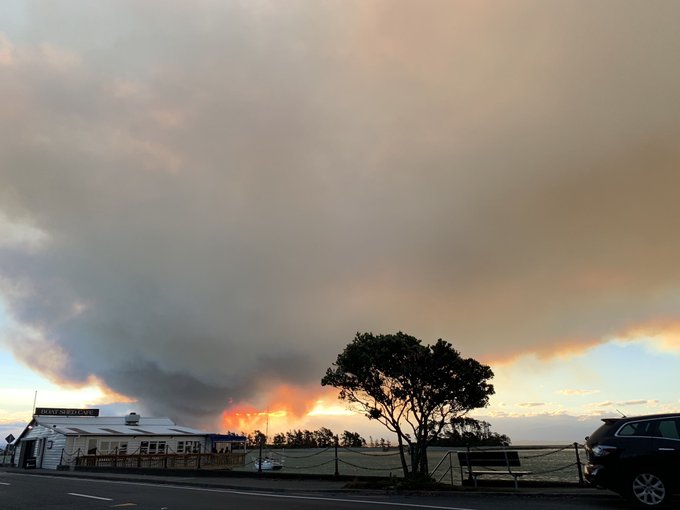
Work on the exit of New Zealand from the environmental crisis.
ReplyDeleteQuotes: "The river bed dries up, and in the middle of New Zealand runs out of water."
New Zealand: "The water ends in Makar."
"Swimmers warned them to take care of toxic algae found in the Wellington Rivers."
A small New Zealand territory can emerge from the environmental crisis only by working together in Australia:
The first. Cooling the territory of Australia and New Zealand, and the surrounding water space due to the production of cooled fresh water.
Due to the triple protective strips, primarily around forests, reducing the speed of winds in Australia by 60%, the preservation and growth of forests.
Termination of forest fires - and an increase in Australian forests from 16% to 32% due to planting tree saplings.
The destruction of toxic algae - and the salvation of fish and other inhabitants of the seas.
A positive result will be received in about 15 years.
Sincerely, environmental programs developer, Victor Rodin. Ukraine. Khmelnitsky NPP. Tel. Kiev Star: 961336344. Mail: dorosydos@gmail.com, rodinviktor@lenta.ru
--- --- ---
Работы по выходу Новой Зеландии из экологического кризиса.
Цитаты: «Русло реки высыхает, и в средней части Новой Зеландии заканчиваются запасы воды».
Новая Зеландия: «Заканчивается вода в Макаре».
«Пловцы предупредили, чтобы они позаботились о токсичных водорослях, обнаруженных в реках Веллингтона».
Небольшая по территории Новая Зеландия может выйти из экологического кризиса, только проведя совместные работы на территории Австралии:
Первое. Охлаждение территории Австралии и Новой Зеландии, и окружающего их водного пространства за счёт производства охлаждённой пресной воды.
За счёт тройных защитных полос, в первую очередь вокруг лесов, уменьшение скорости ветров в Австралии на 60%, сохранение, и прирост лесов.
Прекращение лесных пожаров – и увеличение лесов Австралии с 16% - до 32% за счёт посадки саженцев деревьев.
Уничтожение токсичных водорослей – и спасение рыбы и других обитателей морей.
Положительный результат – будет получен примерно через 15 лет.